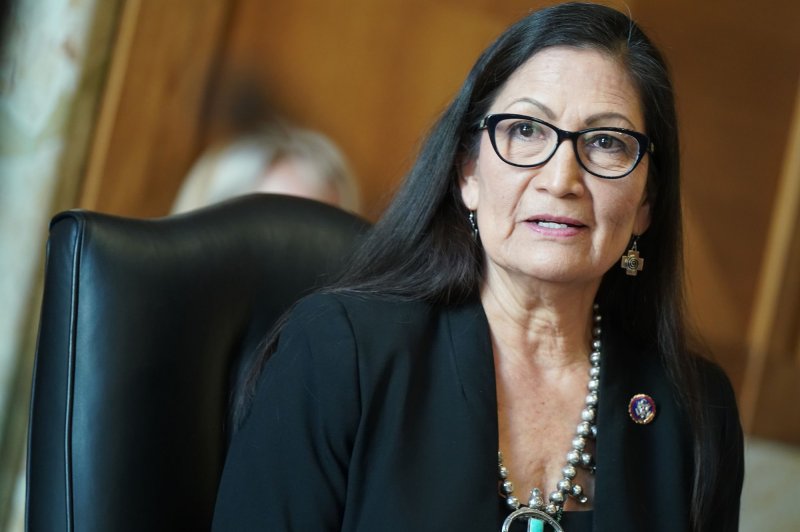Court issues stay on hog slaughter inspection rule
USDA photo by Preston Kere

A U.S. Department of Agriculture (USDA) Inspector shows Agriculture Secretary Sonny Perdue around the processing floor of the Triumph Foods pork processing facility April 28, 2017. The facility houses 2,800 employees in St. Joseph, Mo.
USDA has 90 days to determine next steps in how to address courts’ criticisms of considering impact of worker safety.
Jacqui Fatka | Apr 02, 2021
The U.S. District Court of Minnesota issued a decision in United Food and Commercial Workers Union, Local No. 663 v. U.S. Department of Agriculture, requiring the new administration’s USDA to decide how to proceed on the 2019 rule to change line speeds on hog slaughter inspection lines.
The decision essentially threw out the elimination of line speed limits because USDA did not adequately consider the impacts of the increased slaughter speeds on worker safety, the court says. The rest of the rules remained in place, and the court stayed its order for 90 days, giving the new administration the opportunity to rewrite the policies. Public Citizen Litigation Group represented four UFCW locals and UFCW International, which represents 33,000 workers in the pork processing industry.
The court held that USDA acted "arbitrarily and capriciously" when it refused to consider the impact of eliminating line speeds on worker health and safety in a rule it issued creating the New Swine Inspection System in October 2019. The court also rejected the meatpacking industry’s arguments that increased line speeds do not put workers at increased risk of harm, citing evidence showing a relationship between high speeds and musculoskeletal injuries, lacerations and amputations.
“The court’s decision recognized that Trump’s USDA violated basic principles of administrative law when it refused to consider the impact of its actions on plant workers and claimed, contrary to its longstanding practice, that it was not allowed to do so,” says Adam Pulver, the Public Citizen attorney who serves as lead counsel on the case.
The court vacated the provision of NSIS that eliminates line speed limits but placed its order on hold for 90 days to allow USDA time to develop a plan with respect to those plants that have converted to NSIS.
“The Administration is deeply committed to worker safety and a safe, reliable food supply. This is an important decision, and we are reviewing it closely in light of the authorities, mission and mandate of the Food Safety and Inspection Service,” according to a statement from a FSIS spokesman.
The North American Meat Institute also says it offered compelling evidence about the safety of workers under NSIS in its amicus brief. “For these reasons, we would like to see the agency appeal and ask for a stay,” says Meat Institute spokeswoman Sarah Little.
Line speeds are adjusted in all plants to optimize efficiencies without jeopardizing worker safety, animal welfare, food safety or quality. Line speeds depend on many factors, such as livestock conditions, staffing, equipment capabilities and food safety controls.
“NSIS comes with new, additional requirements, such as monitoring to ensure process control. FSIS inspectors may slow the line,” explains Little.
FSIS’s analysis shows that plants operating under the pilot program – HACCP Inspection Models Project or HIMP - averaged line speeds of 1,099 head per hour, with speeds varying from 885 head per hour to 1,295 head per hour, the Meat Institute shares.
FSIS states, “Although they are authorized to do so, market hog HIMP establishments do not operate at line speeds that are significantly faster than the current maximum line speeds for market hogs.” Maximum line speed for the traditional system is 1,106 head per hour.
FSIS compared establishment injury rates between HIMP and traditional establishments from 2002 to 2010. The preliminary analysis shows that HIMP establishments had lower mean injury rates than non-HIMP establishments. Plants that elect to operate under NSIS must provide safety attestations annually. In addition, FSIS inspectors have the authority to reduce speeds if they believe the line speed poses a worker safety risk, the Meat Institute adds.
FSIS evaluated the HIMP inspection program and found that HIMP market hog establishments receive more off-line food safety related inspection verification checks than the traditional non-HIMP market hog establishments, the Meat Institute adds.
“HIMP market hog establishments have higher compliance with Sanitation SOP [standing operating procedures] and HACCP regulations, lower levels of non-food safety defects, equivalent or better Salmonella verification testing positive rates than traditional non-HIMP market hog establishments, and lower levels of violative chemical residues. Under NSIS, market hog establishments are receiving an increased level of Sanitation SOP and HACCP inspection,” the Meat Institute explains.
“Food and Water Watch claims HIMP/NSIS FS-2 rates of violations are higher than traditional plants, but this is incorrect,” adds Little. “Under the traditional system, inspectors check 11 carcasses for violations, but in a HIMP/NSIS facility inspectors check twice as many (24) carcasses for violations.”






